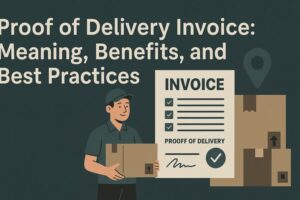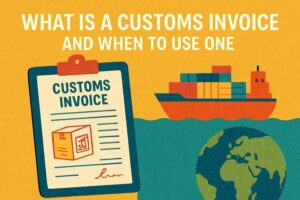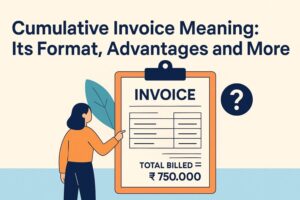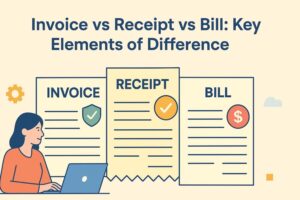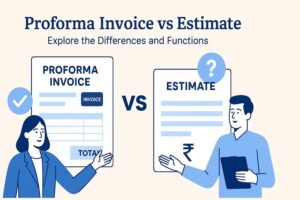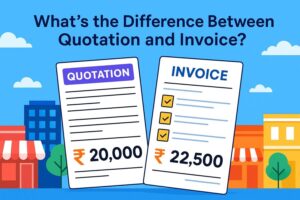How to Make Proforma Invoice and Why Do You Need it?
- 7 Nov 25
- 11 mins
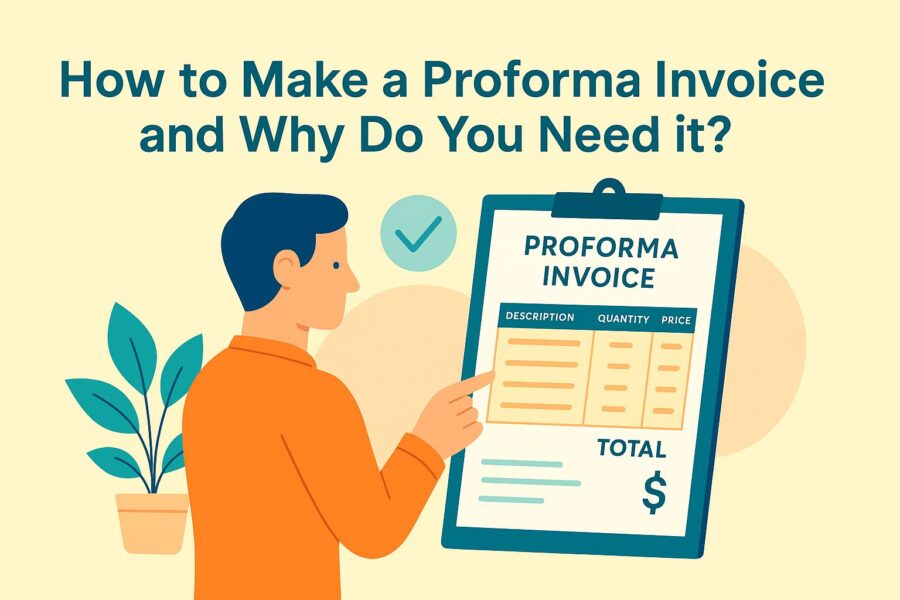
How to Make Proforma Invoice and Why Do You Need it?
Key Takeaways
- A proforma invoice serves as an estimate or quotation shared before the actual sale. It outlines expected costs, terms, and payment details, helping both buyer and seller stay aligned before finalizing a transaction.
- By clearly listing item details, taxes, and charges, businesses can prevent misunderstandings and foster trust with clients. Transparency through proper documentation also supports GST compliance and reduces the risk of fraudulent activities.
- Businesses can easily learn how to make proforma invoice online using e-invoicing software, Excel templates, or specialized platforms like Pice. These solutions automate calculations, reduce manual effort, and ensure professional presentation.
- When you know how to make proforma invoice correctly, it becomes an effective tool to confirm orders and negotiate terms. This helps avoid payment delays and ensures both parties agree before initiating delivery or service.
- Although not legally binding, a proforma invoice helps facilitate customs clearance, provides cost clarity for imports and exports, and supports smoother international transactions.
Suppose you own a business or are involved in operations where you are responsible for delivering goods to the customers. In that case, you must be aware of the different invoice types. A pro forma invoice differs significantly from other invoices, as it does not request payment from an individual or business.
With a forecast predicting e-invoicing market growth at a CAGR of 29.9% by the end of 2029, it is essential to learn the fundamentals of invoicing. In this blog, you will learn in detail how to make a proforma invoice so that your brand receives payment on time.
How to Make a Proforma Invoice?

More companies are adopting e-invoicing as 2025 progresses. Their primary interest grew as e-invoicing has helped maintain internal data security, legal compliance, and fraud prevention. In this regard, if you are unsure about how to generate a proforma or preliminary invoice, please follow the steps outlined below:
Step 1: Find Costs
Before proceeding with the creation of a preliminary invoice template, you first need to determine the approximate cost of the resources required. This involves noting all the expenses that the purchaser will need to bear.
Additionally, you must take into account extra costs, which typically include customs fees (for exports), taxes, shipping charges, etc. It is crucial to present a thorough and precise cost breakdown in this section. It provides customers with clarity, enabling them to budget accordingly.
Step 2: Choose a Proforma Invoice Generation Platform
The next and most crucial decision of how to make a proforma invoice is selecting a suitable website or online tool. You can replicate a regular format in MS Excel to create your own version, or avoid the tedious, repetitive task by choosing professional software, such as that offered by Pice.
You have to ensure that your proforma invoice consists of a clear title, your institution’s trade name and registered address, your buyer’s information, GST invoice generation date and the expiration date. Including unique invoice numbers for each proforma invoice is optional.
Step 3: Include the Invoice Items
When generating a proforma invoice, you must list all the goods to be included later in the sales invoice.
As a business owner, you should make sure that this part is completed correctly, as inaccuracies can cause various issues later. For instance, a company named B Braun Medical India Pvt. Ltd. was denied an Input Tax Credit of ₹5.65 crore due to invoice mismatches, as the business was suspected of fraudulent intent.
To avoid such instances, you must list each item carefully along with its deliverable quantity and brief descriptions. Additionally, ensure that the country of origin of the goods is included if you are involved in an export business.
Step 4: Vividly Mention the Agreement Terms
You can maintain complete transparency with your clients by clearly outlining the terms of your contract in the proforma invoice. For instance, if your customers are planning to import goods from you, you can specify the particular currency you will accept for payment.
Not skipping this particular step can be advantageous in the long term. It helps to avoid unwanted surprises for both the buyer and the seller. Once you have confirmed the agreement section, you can attach your signature to the form. Affixing your signature will mark the completion of the proforma invoice, which can then be forwarded to the customer.
Step 5: Negotiate and Finalise an Agreement With the Buyer
After you send your proforma invoice, half the job is done. Next, you must reach an agreement with your potential client. A company can only initiate the project, deliver items, or send an invoice once both parties approve the quoted price.
What are the Different Options for Making a Proforma Invoice?
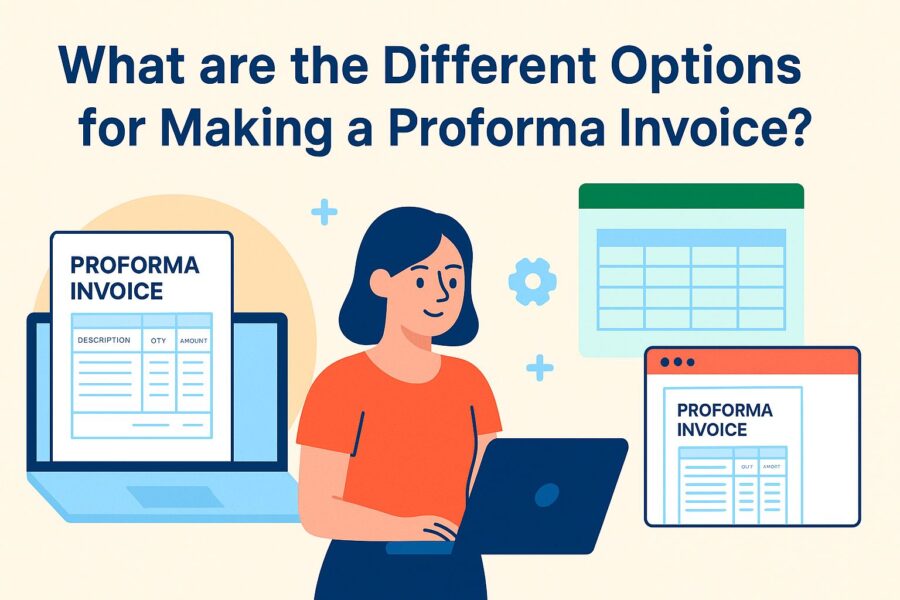
In India, roughly 20% of small business owners fear having to refuse new orders due to unpaid invoices. You can successfully avoid such a situation by informing your clients of pending invoice amounts beforehand.
Here is how to make a proforma invoice online:
- Use an Invoicing Software
Many professional invoicing software solution providers give you the chance to generate proforma invoices. Their templates are quite useful in making professional-looking forms easily. Thus, you can create a preliminary invoice by using software as follows:
- Provide key information like seller, buyer, item specifications, unit prices and quantities.
- Next, the software automatically determines the applicable GST, shipping costs and the gross due amount.
- Then, you can personalise your proforma invoice by adding your unique logo and design elements.
- Finally, you must review the details before forwarding the proforma invoice digitally to your customers.
- Make a Proforma Invoice Via MS Excel or Sheets
If you wish to create a thoroughly customised invoice, using MS Excel or Google Sheets will be an ideal option. To do this, follow the instructions below:
- Either refer to a free template online or make a custom design by including all the necessary fields.
- Cover sections for important seller and buyer details, quantity of items, their descriptions and prices.
- Display your brand logo to give a professional look.
- Check the proforma invoice to verify if there are any mistakes. Next, you can save it as a PDF or send it to your customers directly.
- Use Online Proforma Invoice Makers
Virtual proforma invoice-making tools are meant to work in a specified way to create standardised invoice formats. To use them properly, you have to follow the guide given here:
- Click on ‘Proforma Invoice’ while selecting the appropriate document type.
- Provide the contact details of your business as well as your client.
- Provide your company’s logo and name.
- Send the proforma invoice online or store it on your device.
💡For easy invoice generation and sharing, use the PICE App.
Which Details Are Mandatory in a Proforma Invoice?
Be sure to incorporate these fields in your proforma invoices:
- A title mentioning ‘Proforma Invoice’ to clarify the document’s purpose
- A unique reference number or invoice number for easy tracking
- Delivery date of the mentioned goods and the invoice issuance date
- Seller’s GST-registered company name, address, contact information and bank account-related information
- Buyer’s name besides the billing and shipping details
- Description of invoice items with the total quantity and price per unit
- Total invoice value and quantity
- Any additional fees, charges or discounts to be provided
- Total value of applicable taxes and their category-wise breakdown
- Accepted payment methods and estimated payment date
- The proforma invoice’s expiry date
- Shipping terms like carrier costs, handling costs and weight to be delivered
- You offer’s validity period
- Terms and conditions of the transaction
- The signature of the authorised personality plus their contact details to facilitate follow-ups
Having learned the process of making a proforma invoice, you can now easily grasp its importance in business.
What are Some Reasons Businesses Need to Use Proforma Invoices?
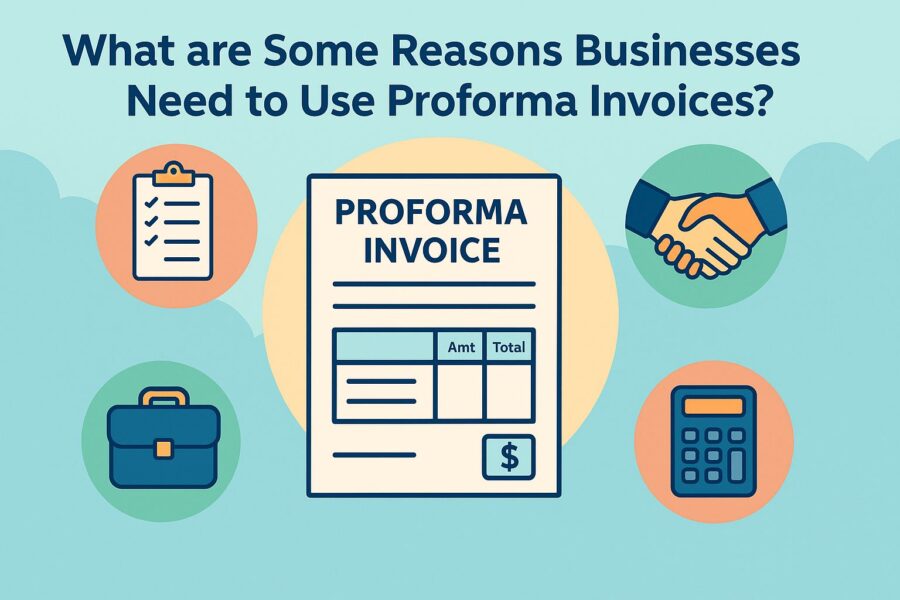
Using proforma invoices can serve the following 5 purposes:
- You are Able to Establish Transparency in Business
In July 2025, the Directorate General of GST Intelligence (DGGI), Bengaluru found six shell companies that fraudulently claimed approximately ₹48 crore as ITC. Although this was a large-scale investigation initiated due to suspicion of abruptly inflated turnover, it is essential to remain vigilant with the correct set of documentation.
Proforma invoices offer a neat breakdown of estimated costs. When clients review the details, it helps to eliminate misunderstandings. In the long term, this enables businesses to avoid legal consequences and ensures the integrity of the GST system is maintained.
- You Can Encourage the Buyers to Make Pre-sales Commitment
A proforma invoice works like a preliminary agreement where both the seller and buyer agree to the outlined pricing and delivery terms. However, they have a validity period within which a response from the buyer is required for the seller to proceed with the given order.
- Proforma Invoices Offer an Opportunity for Negotiation
A proforma invoice adds a buffer period before the actual sale occurs. This allows both parties to discuss and adjust the outlined terms, facilitating meaningful negotiations on payment terms, delivery timelines, and pricing.
- Your Operations Team Can Streamline the Internal Processes
With proforma invoices, internal workflows and approvals are always in line. It is especially true across sectors, as all stakeholders remain informed about the value to be delivered before approving any transaction.
- Proforma Invoices Support International Transactions
Proforma invoices, which include key shipment details and value, are often needed for customs clearance. Furthermore, as this document features payment expectations and terms vividly, it reduces potential delays and disputes.
Note: In the B2B space, proforma invoices are considered estimates or proposals instead of final agreements. Hence, these documents are not legally enforceable and also should not be recorded under the accounts receivable section.
How is a Proforma Invoice Different From a Regular Invoice?
For precise implementation, merely knowing how to make a proforma invoice is simply not sufficient. Please refer to the table below to differentiate proforma invoices from regular invoices.
| Parameter | Proforma Invoice | Regular Invoice |
| Purpose | Provides an estimate or quotation before a sale is finalised. Used especially in international trades. | It is a formal request for payment after goods or services are delivered. |
| Legal Implication | Proforma invoices are not legally binding. Serves as a good-faith estimate with no tax or contractual status. | Sales or regular invoices are legally enforceable. A seller can use it in court to enforce pending payments. |
| Usage | Sent before a sale to outline terms, facilitate customs clearance, provide quotations, and help confirm orders. | Issued after goods are delivered to request payment, track revenue, and comply with tax obligations. |
Conclusion
Knowing how to make a proforma invoice is crucial for streamlining sales processes, fostering transparency, and building trust with clients. By following the right steps, such as listing accurate costs, specifying agreement terms, and using professional invoice templates, businesses can create clear, compliant documents that minimise disputes.
A well-structured proforma invoice not only facilitates smoother negotiations but also accelerates payment cycles, aids clearance from customs agencies for international trade, and supports better cash flow management.
Ultimately, this simple yet powerful tool strengthens operational efficiency, safeguards financial interests, and positions your company for sustained growth in competitive domestic and global markets.







